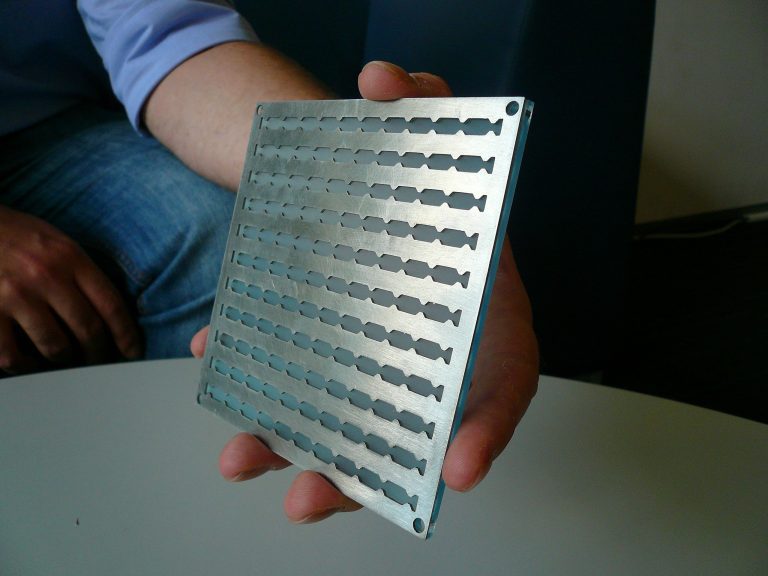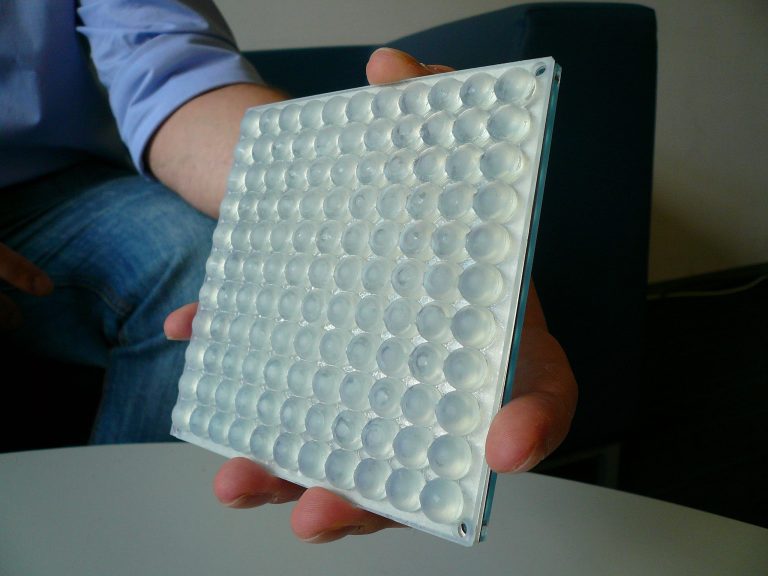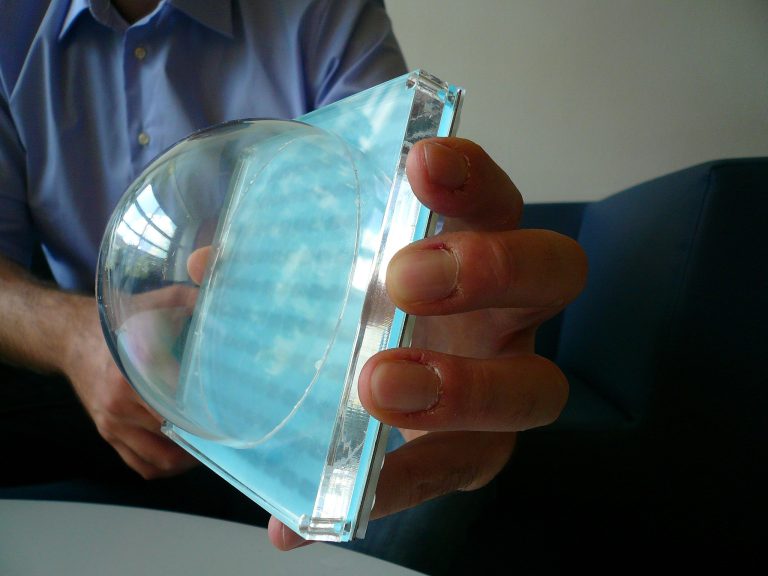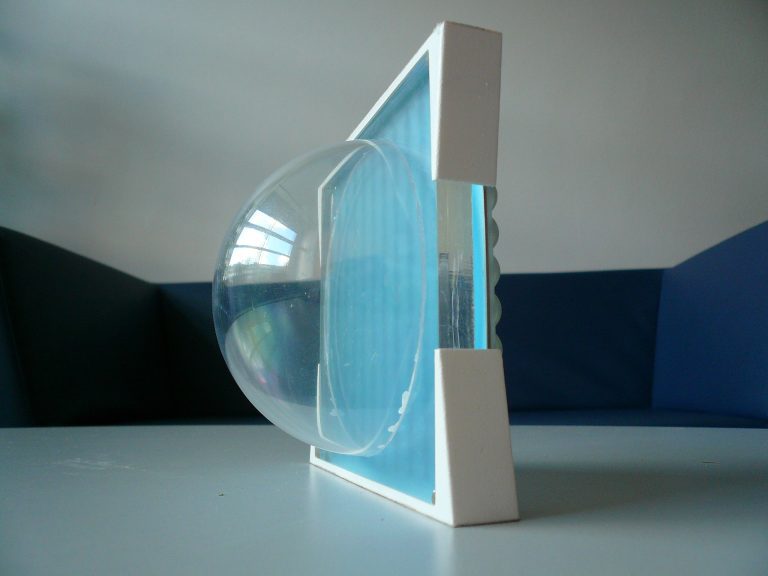The new terahertz source that Dr Alessandro Garufo is developing will be dozens of times stronger than current standards. It promises high-resolution security imaging.
Alessandro Garufo with scale-model of terahertz generator (Photo: Jos Wassink)
You’ve probably all seen the body scanners in airports that can look through your clothes. And you probably also know that these images are not very sharp. A new terahertz transmitter that Dr Alessandro Garufo is developing may improve these scans drastically and benefit terahertz spectroscopy – a technique that can detect drugs or explosives by their molecular fingerprint.
The problem with terahertz radiation is the technology gap between microwave (up to 100 gigahertz) and infrared radiation where electronics and optics meet. Airport body scanners, for example, operate in the microwave part of the spectrum. Terahertz transmitters typically have much lower outputs (current industry standard is 50 microwatts).
 A metal layer on top of the GaAs semiconductor contains dozens of antenna’s (here in scale model)
A metal layer on top of the GaAs semiconductor contains dozens of antenna’s (here in scale model)During his PhD research at the Faculty of Electrical Engineering, Mathematics and Computer Science, Dr Garufo discovered that the antenna design limited the output.

His improved design features dozens of antenna gaps with individual micro-lenses on top of each one. Laser light focuses onto the gallium arsenide semiconductor below. An external power source accelerates electrons freed from the valence band by a short laser pulse (100 femtosecond) and creates terahertz radiation in the metal antenna array.
 Note: model has been turned 180 degrees
Note: model has been turned 180 degreesA lens on the back of the transmitter focuses the terahertz radiation from the antennas in the array.
Garufo, who expects to produce a prototype in the next few months, has high expectations of this technology: 1-2 milliwatt of power (20-40 times more than the current standard) and a ‘monstrous’ bandwith of 400 gigahertz (from 0.1-0.5 THz).
 Prototype model scale 1:10 fully assembled
Prototype model scale 1:10 fully assembledMore powerful terahertz transmitters enable scanning operations at longer distances and shorter reconstruction times for tomographic imaging.
Garufo’s research is part of the work by Professor Andrea Neto under the ERC grant for Advanced Antenna Architectures for THz sensing Instruments (AAATSI) from 2011.
–> Alessandro Garufo, Towards the Engineering of Pulsed Photoconductive Antennas, PhD supervisors Prof. Andrea Neto and Dr. Nuria Llombart, June 1 2017.
Do you have a question or comment about this article?
j.w.wassink@tudelft.nl

Comments are closed.